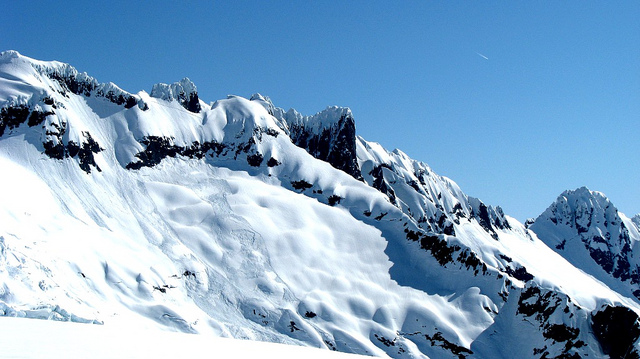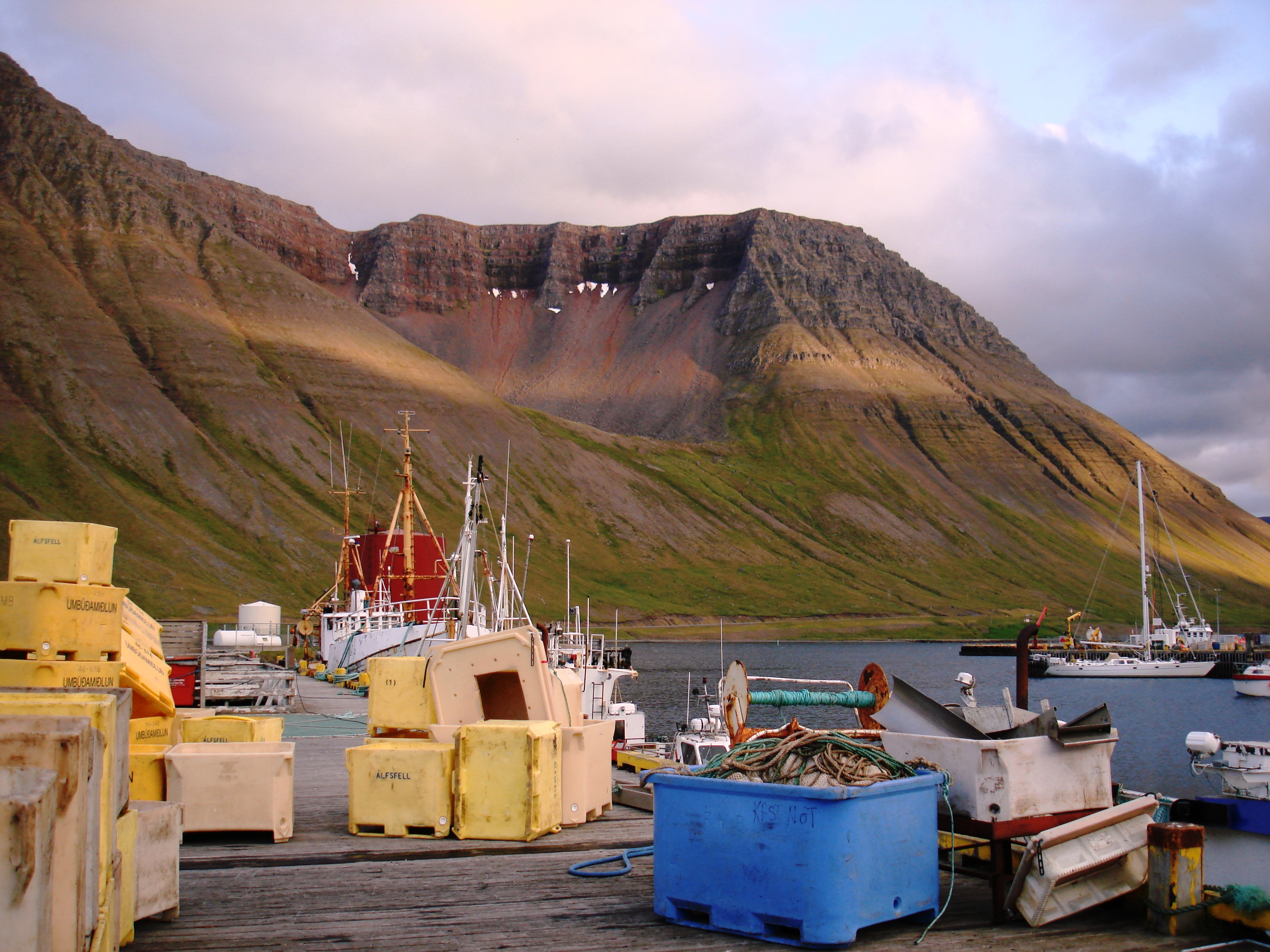|
NĂłi AlbĂnĂłi
''Noi the Albino'' ( () is an Icelandic film by director Dagur KĂĄri released in 2003. The film explores the life of teenage outsider NĂłi (played by TĂłmas Lemarquis) in a remote fishing village in western Iceland. It won multiple awards. ''NĂłi albinĂłi'' was filmed in Bolungarvik (pop. 957), a fishing village in the far northwest of Iceland, located on the Westfjords peninsula. The moody original musical score is from the director's band, Slowblow. The ''Los Angeles Times''' Kenneth Turan called the movie "singular enough to have swept the Eddas, the Icelandic Academy Awards" and noted that it was a selection in "dozens of film festivals." Skye Sherwin of the BBC called it "a coming-of-age tale, bound between grinding humdrum and exquisite surrealism." Plot NĂłi Kristmundsson is a 17-year-old living in a remote fishing village in western Iceland with his grandmother LĂna (Anna FriĂ°riksdĂłttir). His father Kiddi (Ăröstur LeĂł Gunnarsson), an alcoholic taxi driver, a ... [...More Info...] [...Related Items...] OR: [Wikipedia] [Google] [Baidu] |
Dagur KĂĄri
Dagur KĂĄri (born Dagur KĂĄri PĂ©tursson; 12 December 1973) is an Icelandic film director. Early life He was born in Paris, France, to Icelandic parents. The family returned to Iceland when he was 3 years old. After attending local schools as a child, KĂĄri went to Denmark for college. He graduated from the National Film School of Denmark in 1999, having created the art house short movie ''Lost Weekend''. The film won 11 prizes on the international festival circuit. Career Kari's first feature film '' Noi the Albino'' (''NĂłi albĂnĂłi'', 2003) won several international awards. His second film, '' Voksne mennesker'' (''Dark Horse'', 2005) was screened in the Un Certain Regard section at the 2005 Cannes Film Festival. In 2008, he finished his first English-language film '' The Good Heart'', starring Americans Brian Cox and Paul Dano, and French actress Isild Le Besco. He is also a member of the band Slowblow. He featured their music in '' NĂłi albĂnĂłi''. In December ... [...More Info...] [...Related Items...] OR: [Wikipedia] [Google] [Baidu] |
The Guardian
''The Guardian'' is a British daily newspaper. It was founded in Manchester in 1821 as ''The Manchester Guardian'' and changed its name in 1959, followed by a move to London. Along with its sister paper, ''The Guardian Weekly'', ''The Guardian'' is part of the Guardian Media Group, owned by the Scott Trust Limited. The trust was created in 1936 to "secure the financial and editorial independence of ''The Guardian'' in perpetuity and to safeguard the journalistic freedom and liberal values of ''The Guardian'' free from commercial or political interference". The trust was converted into a limited company in 2008, with a constitution written so as to maintain for ''The Guardian'' the same protections as were built into the structure of the Scott Trust by its creators. Profits are reinvested in its journalism rather than distributed to owners or shareholders. It is considered a newspaper of record in the UK. The editor-in-chief Katharine Viner succeeded Alan Rusbridger in 2015. S ... [...More Info...] [...Related Items...] OR: [Wikipedia] [Google] [Baidu] |
2003 Drama Films
3 (three) is a number, numeral (linguistics), numeral and numerical digit, digit. It is the natural number following 2 and preceding 4, and is the smallest odd prime number and the only prime preceding a square number. It has religious and cultural significance in many societies. Evolution of the Arabic digit The use of three lines to denote the number 3 occurred in many writing systems, including some (like Roman and Chinese numerals) that are still in use. That was also the original representation of 3 in the Brahmic numerals, Brahmic (Indian) numerical notation, its earliest forms aligned vertically. However, during the Gupta Empire the sign was modified by the addition of a curve on each line. The NÄgarÄ« script rotated the lines clockwise, so they appeared horizontally, and ended each line with a short downward stroke on the right. In cursive script, the three strokes were eventually connected to form a glyph resembling a with an additional stroke at the bottom: à„©. ... [...More Info...] [...Related Items...] OR: [Wikipedia] [Google] [Baidu] |
Avalanches In Film
An avalanche is a rapid flow of snow down a slope, such as a hill or mountain. Avalanches can be triggered spontaneously, by factors such as increased precipitation or snowpack weakening, or by external means such as humans, other animals, and earthquakes. Primarily composed of flowing snow and air, large avalanches have the capability to capture and move ice, rocks, and trees. Avalanches occur in two general forms, or combinations thereof: slab avalanches made of tightly packed snow, triggered by a collapse of an underlying weak snow layer, and loose snow avalanches made of looser snow. After being set off, avalanches usually accelerate rapidly and grow in mass and volume as they capture more snow. If an avalanche moves fast enough, some of the snow may mix with the air, forming a powder snow avalanche. Though they appear to share similarities, avalanches are distinct from slush flows, mudslides, rock slides, and serac collapses. They are also different from large scale move ... [...More Info...] [...Related Items...] OR: [Wikipedia] [Google] [Baidu] |
Films Directed By Dagur KĂĄri
A film, also known as a movie or motion picture, is a work of visual art that simulates experiences and otherwise communicates ideas, stories, perceptions, emotions, or atmosphere through the use of moving images that are generally, since the 1930s, synchronized with sound and (less commonly) other sensory stimulations. Etymology and alternative terms The name "film" originally referred to the thin layer of photochemical emulsion on the celluloid strip that used to be the actual medium for recording and displaying motion pictures. Many other terms exist for an individual motion-picture, including "picture", "picture show", "moving picture", "photoplay", and "flick". The most common term in the United States is "movie", while in Europe, "film" is preferred. Archaic terms include "animated pictures" and "animated photography". "Flick" is, in general a slang term, first recorded in 1926. It originates in the verb flicker, owing to the flickering appearance of early films. ... [...More Info...] [...Related Items...] OR: [Wikipedia] [Google] [Baidu] |
2000s French-language Films
S, or s, is the nineteenth Letter (alphabet), letter of the Latin alphabet, used in the English alphabet, the alphabets of other western Languages of Europe, European languages and other latin alphabets worldwide. Its name in English is English alphabet#Letter names, ''ess'' (pronounced ), plural ''esses''. History Northwest Semitic abjad, Northwest Semitic Shin (letter), ĆĄĂźn represented a voiceless postalveolar fricative (as in 'ip'). It originated most likely as a pictogram of a tooth () and represented the phoneme via the acrophonic principle. Ancient Greek did not have a "sh" phoneme, so the derived Greek letter Sigma (letter), Sigma () came to represent the voiceless alveolar sibilant . While the letter shape ÎŁ continues Phoenician ''ĆĄĂźn'', its name ''sigma'' is taken from the letter ''Samekh'', while the shape and position of ''samekh'' but name of ''ĆĄĂźn'' is continued in the ''Î, xi''. Within Greek, the name of ''sigma'' was influenced by its associatio ... [...More Info...] [...Related Items...] OR: [Wikipedia] [Google] [Baidu] |
Icelandic Drama Films
Icelandic refers to anything of, from, or related to Iceland and may refer to: *Icelandic people *Icelandic language *Icelandic orthography *Icelandic cuisine See also * Icelander (other) * Icelandic Airlines, a predecessor of Icelandair * Icelandic horse, a breed of domestic horse * Icelandic sheep, a breed of domestic sheep * Icelandic Sheepdog, a breed of domestic dog * Icelandic cattle Icelandic cattle ( ) are a breed of cattle native to Iceland. Cattle were first brought to the island during the Settlement of Iceland a thousand years ago. Icelandic cows are an especially colorful breed with a wide variety of colours and marki ..., a breed of cattle * Icelandic chicken, a breed of chicken {{disambig Language and nationality disambiguation pages ... [...More Info...] [...Related Items...] OR: [Wikipedia] [Google] [Baidu] |
2003 Films
2003 in film is an overview of events, including the highest-grossing films, award ceremonies, festivals, a list of country- and genre- specific lists of films released, notable deaths and film debuts. Highest-grossing films The top 10 films released in 2003 by worldwide gross are as follows: '' The Lord of the Rings: The Return of the King'' grossed more than $1.14 billion, making it the highest-grossing film in 2003 worldwide and in North America and the second-highest-grossing film up to that time. It was also the second film to surpass the billion-dollar milestone after '' Titanic'' in 1997. '' Finding Nemo'' was the highest-grossing animated movie of all time until being overtaken by '' Shrek 2'' in 2004. Events * February 24: '' The Pianist'', directed by Roman Polanski, wins 7 CĂ©sar Awards: Best Film, Best Director, Best Actor, Best Sound, Best Production Design, Best Music and Best Cinematography. * June 12: Gregory Peck dies of bronchopneumonia. * June 2 ... [...More Info...] [...Related Items...] OR: [Wikipedia] [Google] [Baidu] |
Ăingeyri
Ăingeyri (, regionally also ) is a settlement in the municipality of ĂsafjarĂ°arbĂŠr, Iceland. It is located on the coast of DĂœrafjörĂ°ur fjord in the mountainous peninsula Westfjords (in Icelandic language, Icelandic written VestfirĂ°ir). On 1 January 2019, it had a population of 246. It has Ăingeyri Airport, an airport. Continually inhabited since 1787,''Ăslenska alfrĂŠĂ°iorĂ°abĂłkin'', p. 563. Ăingeyri is one of the oldest settlements in the WestfjordsLeffman, p. 207. and the first trading post established there.Simmonds, p. 243.Harding, p. 160. It is believed to derive its name from a medieval assembly (''ĂŸing'') and has ruins of a medieval booth believed to have been used by visitors to the assembly. Thanks to its sheltered location Ăingeyri developed into a significant fishing center. In the 19th century the French applied for permission to establish a base there to support their fishing operations in the area but were turned down. From 1884-98, the town served ... [...More Info...] [...Related Items...] OR: [Wikipedia] [Google] [Baidu] |
ĂsafjörĂ°ur
ĂsafjörĂ°ur (pronounced , meaning ''ice fjord'', literally ''fjord of ices'') is a town in the northwest of Iceland. The oldest part of ĂsafjörĂ°ur with the town centre is located on a spit of sand, or ''eyri'', in SkutulsfjörĂ°ur, a fjord which meets the waters of the larger fjord ĂsafjarĂ°ardjĂșp. With a population of about 2,600, ĂsafjörĂ°ur is the largest settlement in the peninsula of VestfirĂ°ir (Westfjords) and the administration centre of the ĂsafjarĂ°arbĂŠr municipality, which includesâbesides ĂsafjörĂ°urâthe nearby villages of HnĂfsdalur, Flateyri, SuĂ°ureyri, and Ăingeyri. History According to the LandnĂĄmabĂłk (the book of settlement), SkutulsfjörĂ°ur was first settled by Helgi Magri HrĂłlfsson in the 9th century. In the 16th century, the town grew as it became a trading post for foreign merchants. Witch trials were common around the same time throughout the Westfjords, and many people were banished to the nearby peninsula of Hornstrandir, now a nat ... [...More Info...] [...Related Items...] OR: [Wikipedia] [Google] [Baidu] |




